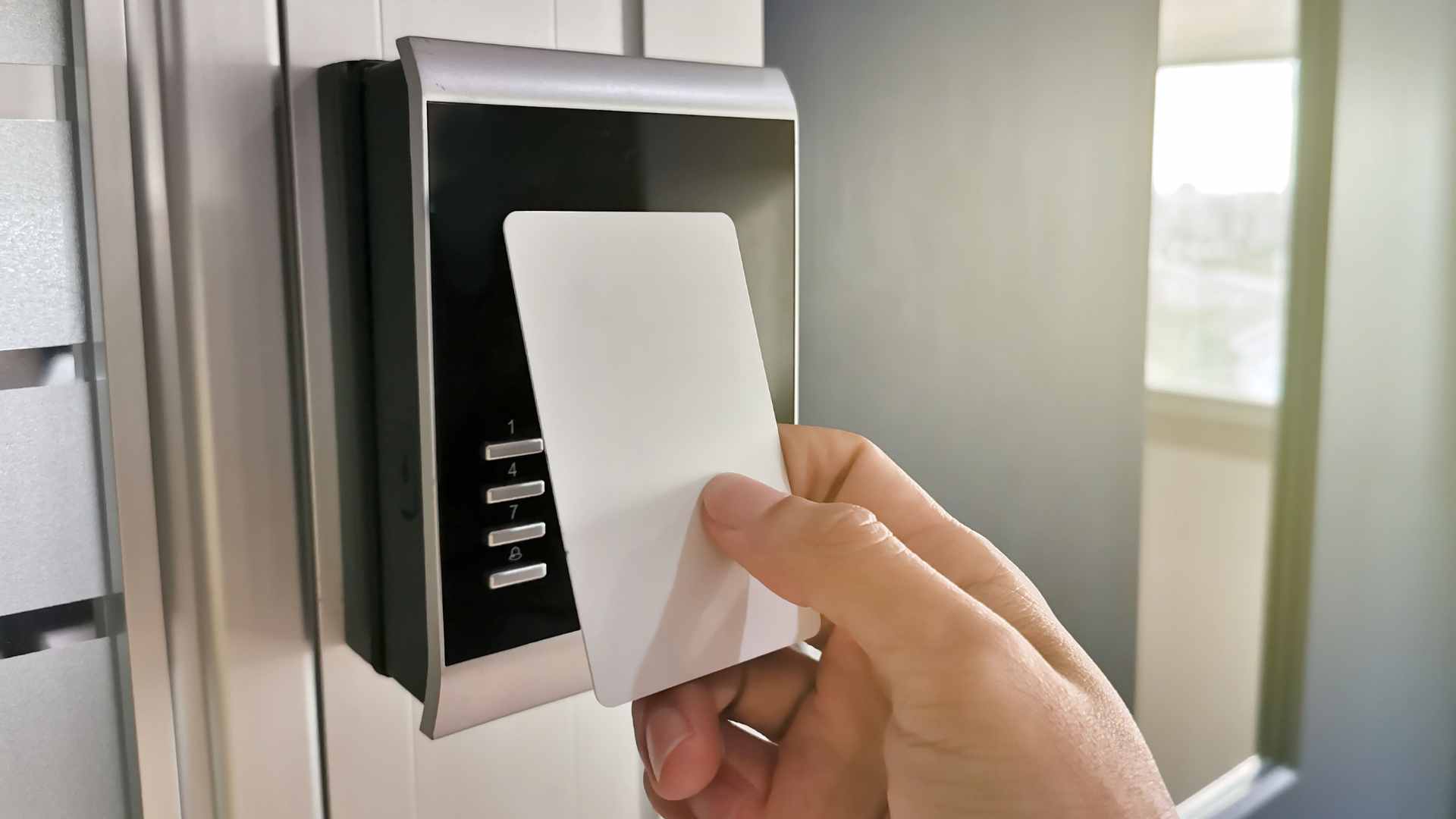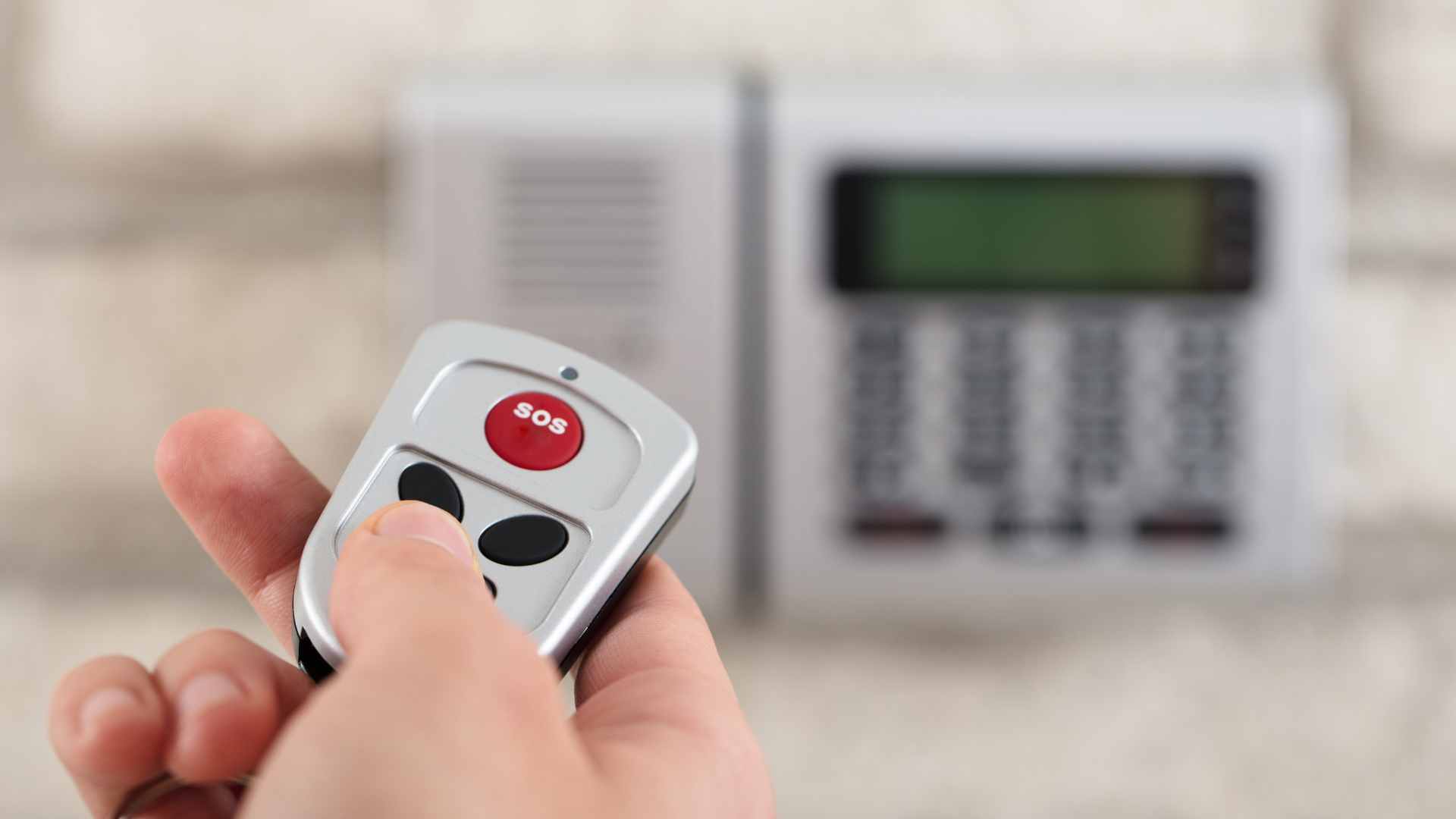In our technologically advanced day, the idea of security has expanded beyond the confines of conventional physical barriers. The remote access security system is one example of a cutting-edge innovation that enables homes and businesses to monitor and control their security systems remotely. This blog explores the ins and outs of remote access security systems, including their features, advantages, and contributions to a more secure environment. Whether you’re a homeowner or a company owner, knowing the ins and outs of remote access security systems is essential for protecting your valuable possessions.
The Basics Of Remote Access Security Devices
Remote access security devices allow users to control and monitor their security systems from a distance, using the internet and connected devices. These systems enhance security by providing real-time alerts, remote control capabilities, and comprehensive monitoring.
Key Components
- Access Control Systems: These systems regulate who can enter a building or specific areas within a building. They typically include card readers, keypads, biometric scanners, and remote access software.
- Card Readers and Keypads: Devices like those offered by SNE Connections allow entry via keycards or codes.
- Biometric Scanners: These allow access using fingerprints, facial recognition, or retinal scans, providing a higher level of security.
- Surveillance Cameras: High-definition cameras that provide live feeds and recordings. They can be accessed remotely to monitor activities in real time.
- HD Cameras: Provide clear images and videos, which are crucial for identifying intruders.
- Night Vision Cameras: Ensure visibility even in low-light conditions.
- Alarm Systems: These systems alert homeowners and authorities in case of unauthorised entry or other emergencies. They can be armed and disarmed remotely.
- Intrusion Alarms: Triggered by unauthorised entry, often integrated with access control and surveillance systems.
- Fire and Hazard Alarms: Provide alerts for smoke, fire, and other hazards.
Remote Access Capabilities
- Mobile Applications: Most remote access security systems come with mobile apps that allow users to monitor and control their systems from smartphones or tablets.
- Real-Time Alerts: Receive instant notifications about security breaches or other events.
- Remote Arm/Disarm: Arm or disarm security systems remotely, adding convenience and flexibility.
- Web-Based Portals: These portals offer comprehensive control over the security system through any internet-connected device.
- Live Video Feeds: View live footage from surveillance cameras.
- Activity Logs: Access detailed logs of all activities and alerts, helping in security audits and reviews.
Benefits of Remote Access Security Systems
- Enhanced Security: Continuous monitoring and immediate response capabilities.
- Convenience: Control your security system from anywhere, providing peace of mind when away from home.
- Cost-Effective: Potential savings on insurance premiums and reduced need for physical security personnel.
- Scalability: Easily add or upgrade components to expand the system as needed.
Requirements For Secure Remote Access Systems
Strong Authentication Mechanisms
Authentication is the first line of defence in any remote access system. It ensures that only authorised users can access the system.
Multi-Factor Authentication (MFA) adds an extra layer of security by requiring users to provide multiple verification forms, such as passwords, biometric scans, or one-time passcodes. While Biometric Authentication offered by Hikvision incorporate biometric methods (fingerprints, facial recognition) to ensure that access is granted only to verified individuals.
Secure Communication Channels
Protecting the data transmitted over remote access systems is crucial to prevent interception and tampering.
- Encryption: All data transmitted should be encrypted using robust protocols like SSL/TLS. This ensures that data cannot be read or altered even if it is intercepted.
- VPNs (Virtual Private Networks): Utilising VPNs can secure communication between remote users and the leading network, providing an encrypted tunnel for data transfer.
Comprehensive Access Control
Effective access control measures are vital to ensure that users only have access to the necessary resources.
- Role-Based Access Control (RBAC): Implementing RBAC allows administrators to assign permissions based on user roles, ensuring access is limited to only necessary functions.
- Privilege Access Management (PAM): Systems from providers like Trend Micro and Hikvision include PAM to manage and monitor privileged accounts, reducing the risk of insider threats.
Regular Monitoring and Auditing
Continuous monitoring and auditing of remote access systems help detect, respond to and respond promptly to security incidents.
- Activity Logs: Maintaining detailed logs of all access attempts and activities helps track user actions and identify suspicious behaviour.
- Real-Time Alerts: Systems should be capable of generating real-time alerts for any unusual or unauthorised activities, enabling quick response to potential threats.
Endpoint Security
Securing the devices that access the remote systems is essential to prevent them from becoming points of vulnerability.
- Antivirus and Anti-Malware: Ensuring all endpoints have up-to-date antivirus and anti-malware protection helps prevent infections that could compromise the remote access system.
- Endpoint Detection and Response (EDR): Deploying EDR solutions provides advanced threat detection and response capabilities, safeguarding endpoints against sophisticated attacks.
Scalability and Flexibility
Remote access systems should be designed to scale with the growing organisation and adapt to changing security landscapes.
- Scalable Architecture: Systems from Hikvision and other providers offer scalable solutions that can expand to accommodate more users and devices without compromising security.
- Flexible Integration: The ability to integrate with other security tools and technologies ensures a cohesive and comprehensive security posture.
Reasons Why Remote Access Security Systems Are Beneficial
Remote access security systems have revolutionised how we protect our homes and businesses. These systems provide numerous advantages that enhance security, convenience, and peace of mind. Here are the key reasons why remote access security systems are beneficial:
Enhanced Security and Monitoring
Real-Time Surveillance: Remote access security systems enable real-time monitoring of your property through high-definition CCTV cameras. Companies like ProConnect Solutions and Optical Solutions offer systems that provide clear, detailed video feeds accessible from anywhere in the world.
Instant Alerts: These systems send instant alerts to your smartphone or other devices when unusual activity is detected, allowing for immediate action. This is particularly useful in preventing theft and vandalism.
Comprehensive Coverage: Advanced features such as night vision and wide-angle lenses ensure your property is monitored 24/7, even in low-light conditions.
Convenience and Flexibility
Remote Control: You can control your security system remotely, including arming and disarming alarms, locking or unlocking doors, and adjusting camera angles. This flexibility is ideal for managing security while away from home.
User-Friendly Apps: Many systems come with intuitive mobile applications that make monitoring and managing your security settings easy.
Cost-Effective Security Solutions
Reduced Costs: Remote access security systems can reduce the need for physical security personnel, leading to significant cost savings. Monitoring your property remotely is a more economical option compared to hiring guards.
Lower Insurance Premiums: Installing a robust security system can result in lower home insurance premiums, as insurers often offer discounts for enhanced security measures.
Improved Emergency Response
Immediate Response: In emergencies such as fire, break-ins, or medical situations, these systems can quickly notify emergency services, ensuring prompt response and potentially minimising damage or injury.
Personal Emergency Devices: Systems like those provided by SoloSafe offer personal emergency response features, including GPS tracking and two-way communication, which benefit elderly individuals and lone workers.
Increased Property Value
Homes and businesses with advanced security systems are often more attractive, potentially increasing property value. A secure property is a significant selling point in today’s market.
Enhanced Data Security
Modern systems offer secure data storage options, often utilising technology to store video footage safely. This ensures that critical data is protected from tampering or loss. Data transmitted over these systems is typically encrypted, providing an additional layer of security against cyber threats.
Peace of Mind
Knowing that your property is continuously monitored provides peace of mind. This sense of security allows you to focus on other essential aspects of your life without constant worry. The widespread use of remote access security systems can contribute to overall community safety, as monitoring more properties can deter criminal activities in the area.
Conclusion
Remote access security systems are innovative technologies that enable homes and businesses to monitor and control their security systems remotely. These systems include access control systems, which regulate who can enter a building or specific areas; biometric scanners; surveillance cameras; HD cameras; night vision cameras; alarm systems; intrusion alarms; and fire and hazardous alarms.
Remote access capabilities include mobile applications, real-time alerts, remote arm/disarm, web-based portals, live video feeds, activity logs, integration with smart home devices, automated responses, voice control, cybersecurity measures, encrypted communication, and regular updates. Benefits of remote access security systems include enhanced security, convenience, cost-effectiveness, and scalability.
Secure remote access systems require robust authentication mechanisms, secure communication channels, comprehensive access control measures, role-based access control (RBAC), privilege access management (PAM), regular monitoring and auditing, activity logs, real-time alerts, robust endpoint security, endpoint detection and response (EDR), regular software updates and patch management, user training and awareness programs, scalability and flexibility, and the ability to integrate with other security tools and technologies.
Remote access security systems offer numerous benefits, including enhanced security, convenience, cost-effectiveness, and scalability. Key components include access control systems, biometric scanners, surveillance cameras, alarm systems, intrusion alarms, fire and hazardous alarms, and web-based portals. By implementing robust authentication mechanisms, secure communication channels, and regular updates, these systems can help protect against potential threats and maintain the integrity of remote access systems.
FAQs About Remote Access Security System
What Is A Remote Access Security System?
A remote access security system allows users to monitor and control their security devices from a distance using the internet and connected devices. It provides real-time alerts, remote control, and comprehensive monitoring capabilities.
How Does A Remote Access Security System Work?
These systems connect security devices such as cameras, alarms, and access control systems to the internet. Users can access and control these devices through mobile apps or web-based portals from anywhere.
What Are The Critical Components Of A Remote Access Security System?
Key components include:
- Access control systems (card readers, keypads, biometric scanners).
- Surveillance cameras (HD and night vision).
- Alarm systems (intrusion and fire alarms).
What Are The Benefits Of Using A Remote Access Security System?
Benefits include enhanced security through continuous monitoring, the convenience of remote control, potential cost savings on insurance and security personnel, scalability, and integration with other smart home devices.
How Secure Are Remote Access Security Systems?
These systems employ strong cybersecurity measures such as encrypted communication, regular software updates, and multi-factor authentication to protect against cyber threats.


